Oh yes, I remember Carlinghow Old Hall.
I used to walk past it every day on my way to school. Although it was a mess, there was no doubt that it was a place of great antiquity. I remember the building, which was little more than a hovel, perched on the middle of a mudbath at the Carlinghow end of Ealand Road. as far as I remember it was inhabited at the time, and their were a few animals – chickens and such – on the land. We thought it was just a small farmstead, and had no idea about its maybe glorious past…
We discussed it at school in History I remember, and we were led to believe that it dated back to the Savile’s of Howley Hall, although it appears that the hall in fact is even older than its more famous counterpart, which was built in the 1580s.
There is not too much information to be found about what the house looked like when it was complete, but according to Wikipedia, Carlinghow Old Hall was a timber-framed
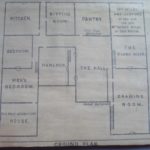
Elizabethan Manor House reputed to have been the home of the Eland family in the later Middle Ages. Sheard’s book, Records of the Parish of Batley reports that it was built by Robert Eland, who died in 1521. The style of the timbering also suggests a 16th-century date, and there was, in 1968, a loose date-stone on site inscribed with the year 1505.
Norman Ellis, author of several books about Batley says “The original hall, build in 1521, had twenty-five apartments and oak panelling. Much of it was demolished in 1800.”
The rest of the hall was demolished in the late 1960’s after being recorded in details for future generations. all that was left of it by then was what appears to be a single wing of the once much larger building.
Not much is known of its history, but with a little research it is possible to pinpoint some of the inhabitants of the hall over the centuries:
Sir Henry Cooke, born 1633, and originally of Coates, Lincolnshire, lived in the house for some years after marrying his wife Diana Butler in August 1659 (died 1668). He married his second wife Anne Stanhope in 1669. Henry was famous, if that is what it could be called, for developing the first documented coalmine in Batley, situated at White Lee.
Sir Henry had 7 children, these being Bryan, George, Jane, Henry, Sarah, Catherine and Anthony.
After the death of his brother George in 1683, Henry became 2nd Baronet and moved away from Carlinghow to Wheatley, where he built the magnificent Wheatley Hall. He passed away in 1689.
Michael Sheard’s aforementioned book also presents evidence of further inhabitants of the hall, as several Batley Parish Church Monumental Inscriptions are listed therein:
- Spinster Mary Beaumont, late of Brantingham who died at Carlinghow Hall 17th of August 1865, aged 75 years. (Mentioned on the Beaumont Family History Website as having left a fortune of under £ 450, as proved by John Scholefield of Bently, Grange parish Emily farmer sole executor.)
- Sarah eldest Daughter of Samuel and Sarah Sharp, of Carlinghow Old Hall, She was born on the 25th April 1810 and died 4th July 1836.
- Mary, wife of Robert Whitton of Ripon; and daughter of Samuel and Sarah Sharp, born May 5th 1815, died August 23rd 1845.
- Beaumont, the only son of Samuel and Sarah Sharp, of Carlinghow Old Hall, born 18th December 1807, died 8th October 1825.
He in a sacred calm resigned his Breath And as his Eyelids clos’d he smiled in death.
- Samuel Sharp of Carlinghow Old Hall, born at South Cave on the 1st January 1784 and died on the 29th December 1865.
- Sarah (née Beaumont) the wife of the aforementioned Samuel Sharp, born at Beverley on the 22nd August 1776 and died at Carlinghow Old Hall, on the 24th January 1854.
Sources:
Mining in Batley: Batley mines on West Riding Archives
The Cooke Family: Arkville History Blog
Batley Parish Church Monumental Inscriptions: Yorkshire Indexers Wiki
Photos: Batley Library
A word on the photos used on this page. Due to their age, it is thought that the pics are in the public domain. If however, anyone claims copyright to them please get in touch with me via the contact form, and I will remove the offending pic aasap.
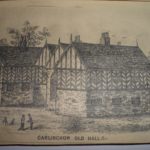
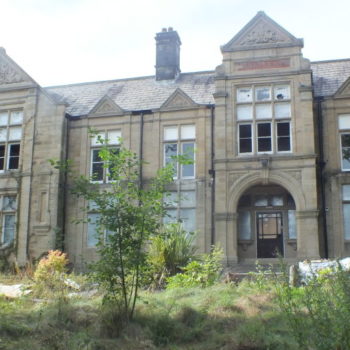
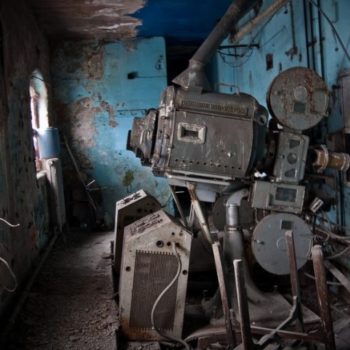

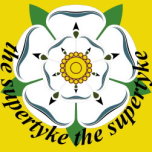
Leigh Laycock
Interesting reading. I have often wondered what this place looked like. I had not realised that is was part of a larger building / complex. Thank you for posting this
Rebekah & Allan Barker
Thanks for posting this. We live on Summerbridge Close and would love to know more about the hall, especially how it was positioned in relation to Ealand Road etc. Research on the internet hasn’t turned up much information, even pictures seem limited. Just curious as to how the place looked all those years ago!
David
Thanks for your Feedback Rebekah and Allan. Unfortunately you are right and there is very little to be found about the old hall on the Internet. You may find more information on the Facebook page “Batley Photos Old and New”, I’m sure it has been talked about on there a couple of times at least.
I was contacted about six months ago by a chap now living in the USA, who says he is an ancestor of some of the former inhabitants. He wanted to send me more information. Unfortunately though, he never got back to me….pity!
Ben
Get back to him – he’s probably just forgotten. The hall was in the far end of the cul-de-sac of Summerbridge Close. An old man who lived there told me this several years ago, in about 2009. Just a thought – where was the Bridge as in Summerbridge? Is there a steam nearby aside from your Batley beck?
David
Hi Ben, thanks for your comments. I did in fact once write back to him. He said he had had a few health issues and would get back to me soon. He never did, though. However I get the impression that he didn’t really know much more than I did, as the original mail was to ask a question. But maybe you’re right, I should get back to him.
As far as the origins of the name Summerbridge Avenue are concerned, I’m afraid I can’t help you any further on this subkect. If something comes up though, I will get back to you.
David
The E-Mail address no longer exists. I’m afraid we’ve lost this contact…
Dave
On a hunch, I wrote to him again. Looks like he has reactivated his email account because this time I got an answer. Unfortunately he is very busy at the moment, but when he gets time, he will get back in touch with what he knows. However, he stresses that he possibly doesn’t know much more than the rest of us. All he knows are facts that he has managed to gleam from different sources… We will see however…
Lynda Oldroyd
Wonder if you could help me please. I’m looking for some information about a Mr & Mrs E Brown of Carlinghow Old Hall Farm. This would be going back to First World War time period. I have some documentation (105 yrs old) stating that William Watson Longbottom was employed by the Browns as a milkman and also under their care along with several other young men.
William was killed in action in 1917. I was wondering if there was any information as to why these young men were in the care of the Brown’s at this time. The documentation as also suggested the Browns had also lost several young men in their care during the First World War. I would be grateful for any information ascertaining to this subject.
Yours faithfully
Lynda